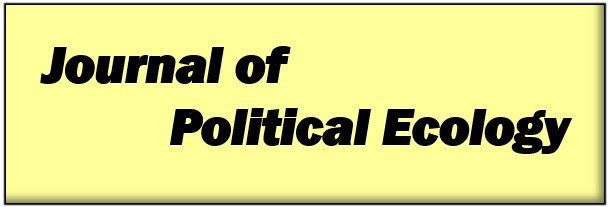Abstract
This article explores the seemingly unlikely intersection of jaguar conservation and green extractivism in the Yucatán Peninsula, Mexico. The 'green' or environmental aspect of jaguar conservation, we argue, is largely manufactured, employing the qualities of ecosystems to market and advance forms of 'place-based' extraction. Analyzing jaguar conservation programs through green extractivism not only shows problems related to market-based conservation schemes, but how these conservation projects advance spatial legibility of resources and political control over territories for public and private actors, aiding capitalist and extractive trajectories. Drawing on fieldwork in Laguna Om, an ejido––rural community––in the south of the Peninsula, the article reveals how an entanglement of market-based instruments (MBIs), voluntary carbon markets, NGOs, corporate financing, environmental policy, and technological developments continue to consume ecosystems into circuits of capitalist control and accumulation. Finally, the article demonstrates, jaguar conservation serves to greenwash traditional extractive and infrastructural development projects, such as Tren Maya. Digitalized and market-based forms of conservation, moreover, reduce ecosystems to units of accounting that are fit for trade in international markets, advancing the capture and accumulation of value through conservation, enacting a process of green extractivism.
Keywords: Mexico, Jaguar Conservation, Megaprojects, Climate change, Infrastructure, Colonization
How to Cite:
Ruelas Espinosa, A. & Dunlap, A., (2023) “How jaguars are actually stolen: Big cat conservation and the green extractivism nexus in the Yucatán Peninsula, Mexico”, Journal of Political Ecology 30(1), 821–845. doi: https://doi.org/10.2458/jpe.5453
Downloads:
Download PDF
View PDF
2404 Views
377 Downloads

